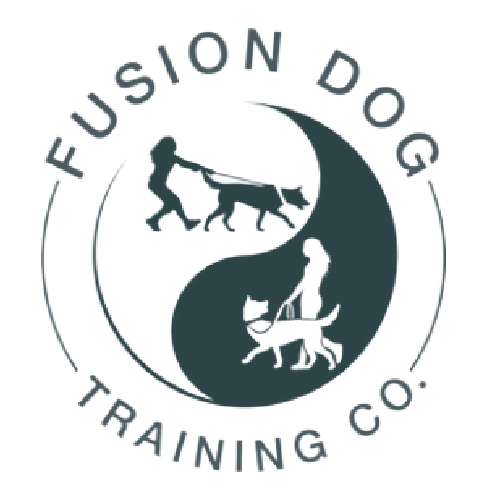Are Choke and Prong Collars Good for Dog Training: Examining Effectiveness and Alternatives
About the Author: As a seasoned dog trainer in Monument, CO, I've helped numerous dog owners establish a strong foundation through effective training methods and practical advice.
Choke collars are a controversial tool for training dogs. Some trainers swear by choke chains and prong collars, while others avoid them completely due to their potential to inflict pain. Choke collars can be effective for training, but they also carry risks if not used properly. So let’s take a closer look.
These collars tighten around a dog's neck when pulled, which can stop unwanted behaviors quickly. But they can also cause pain, injury, or fear if used incorrectly, especially with aversive tools like a shock collar. This makes many dog owners and experts hesitant to recommend them.
There are safer and more positive training methods available today. These focus on rewarding good behavior instead of punishing bad behavior. You have many options to train your dog effectively without using choke collars.
Key Takeaways
Choke collars, or choke chains, can work but have risks if used incorrectly, including increasing the risk of injury.
Safer training methods focus on rewarding good behavior to teach the dog effectively.
You have many effective alternatives to choke collars
Understanding Choke Collars and Dog Training
Choke collars are a controversial training tool for dogs, often compared to shock collars in terms of aversive effects. They come in different types and have sparked debates about their safety and effectiveness.
Types of Training Collars and Their Functionality
Choke collars, also called slip collars, are made of chain or nylon. They tighten when a dog pulls. Martingale collars are similar to choke chains but have a limit on how tight they can get, making them a safer option. Prong collars have metal spikes that press into a dog's neck.
Harnesses fit around a dog's body instead of the neck. They're often seen as a safer choice. Each type of collar works differently to control pulling and other behaviors.
When choosing a collar, think about your dog's size, breed, and training needs. What works for one dog might not work for another.
The Debate Around Choke Collars in Training
Some trainers say choke collars can stop pulling fast. They claim these collars teach dogs to walk nicely on a leash, but they can also inflict discomfort or pain if used incorrectly. But others worry about harm to dogs' necks and throats.
Many vets and behavior experts prefer positive reinforcement. This means rewarding good behavior instead of punishing bad behavior. They say it's kinder and works better in the long run.
Before using a choke collar, talk to your vet or a dog trainer. They can help you decide what's best for your dog. Remember, training should be safe and fun for both you and your pet, focusing on positive dog training techniques.
Best Practices and Alternatives for Effective Training
Training dogs safely and kindly is key. The right tools and methods can help you succeed without causing harm.
Safe and Humane Training Methods
Positive reinforcement is a great way to train dogs. Give treats, praise, or toys when your dog does something good. This helps them learn what you want. Clicker training pairs a clicking sound with rewards. It marks the exact moment your dog does the right thing, which is essential for effective behavioral training.
Short, fun training sessions work best. Aim for 5-10 minutes at a time. Keep things upbeat and end on a good note to reinforce positive behavior in your canine companion. This builds your dog's confidence.
Consistency is crucial. Use the same words and signals each time. Make sure everyone in your family follows the same rules. This helps your dog understand what you expect.
Selecting the Right Collar and Training Tools
Choose gear that fits your dog well and matches their needs, such as a pinch collar or a harness that prevents pulling on the leash. Flat buckle collars work for most dogs. They're comfy and good for holding ID tags.
Harnesses can be a smart choice for canine training and comfort. They spread pressure across the chest instead of the neck. Front-clip harnesses give you more control if your dog pulls on walks.
Head collars fit around the dog's nose and behind their ears, providing better control without pulling on the leash. They can help with pulling but need careful training to use right.
Avoid tools that cause pain or fear. These methods can harm your bond with your dog and lead to more problems if you suppress their natural instincts.
Addressing Common Concerns and Behavior Issues
For leash pulling, try stopping when your dog pulls. Only move forward when the leash is loose. This teaches them that pulling doesn't work.
To stop jumping, ignore your dog when they jump up. Wait for all four paws on the ground before giving attention. This shows them the right way to greet people without inflicting fear or anxiety.
For barking, find out why your dog barks. Are they scared, bored, or excited? Address the cause of the behavior instead of using tools that may suppress it. Teach a "quiet" cue and reward calm behavior.
If aggression is an issue, talk to a pro trainer or vet. They can help find the cause and make a safe plan to fix it.
Frequently Asked Questions
Choke collars are a controversial training tool for dogs, often compared to shock collars in terms of aversive effects. Many people have questions about their safety, effectiveness, and proper use.
What are the potential risks associated with using choke collars on dogs?
Choke collars can cause neck injuries if used improperly. They may damage a dog's trachea, esophagus, or thyroid gland, leading to serious health issues like glaucoma. Prolonged use of aversive tools can lead to chronic pain and breathing issues in dogs.
Some dogs may become fearful or aggressive when wearing choke collars. This can harm the bond between you and your pet, particularly when using these aversive methods.
Is it legal to use choke collars on dogs in most regions?
Choke collars are legal in most areas. Some places have banned or restricted their use. Check your local laws before using one.
Animal welfare groups often speak out against choke collars. Public opinion is shifting away from their use in many places.
How do choke collars compare to martingale collars for dogs that pull?
Martingale collars are gentler than choke collars and are a safer alternative for teaching a dog to walk nicely on a leash. They tighten to a set point and won't constrict beyond that. This makes them safer for dogs that pull.
Choke collars have no stopping point when tightening. This can lead to choking or injury if a dog pulls hard.
Do professional dog trainers endorse the use of choke collars?
Many modern trainers avoid choke collars. They prefer positive reinforcement methods instead. Some trainers still use choke collars for certain situations.
The trend in professional training is moving away from punishment-based tools like choke collars.
What type of training collars are considered the most effective and humane for dogs?
Flat buckle collars and harnesses are seen as most humane. Head halters and front-clip harnesses can help control pulling without pain.
Positive reinforcement with treats and praise is often most effective when wanting to teach your dog new behaviors. These methods build trust and don't rely on discomfort or fear.
At what point in training is it appropriate to introduce a choke collar, if at all?
Many trainers say choke collars should never be used. If you choose to use one, like a shock collar, wait until basic obedience is solid to avoid confusion. Start with a young adult dog, not a puppy.
Always get professional guidance before using a choke collar. Learn proper fitting and use to minimize risks.




